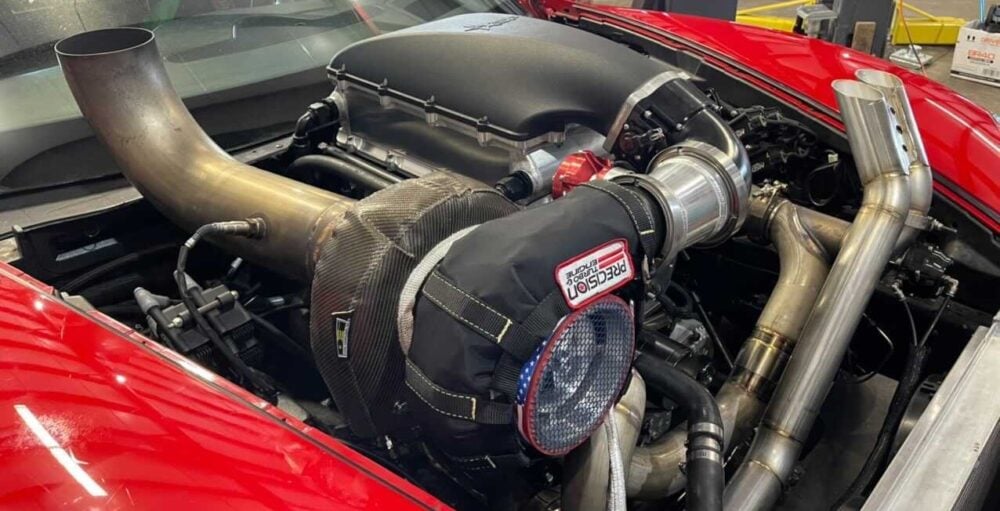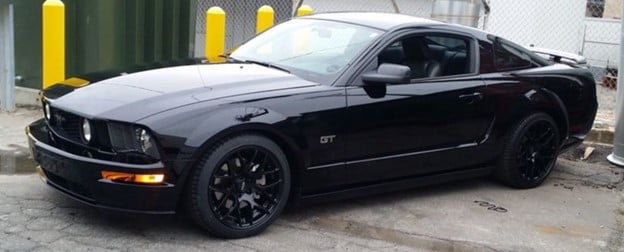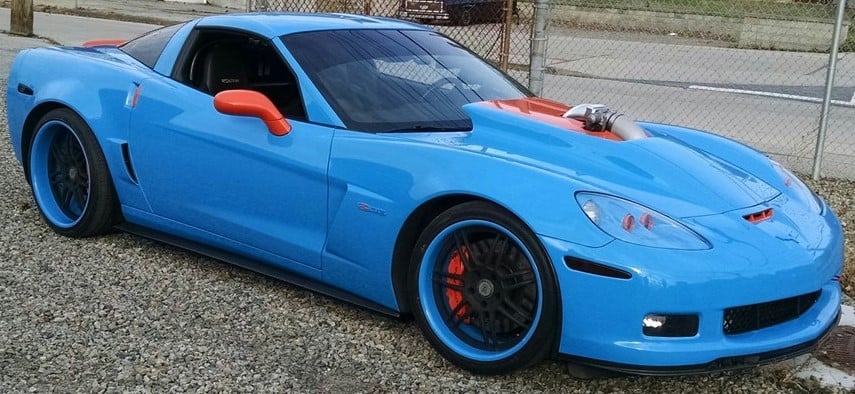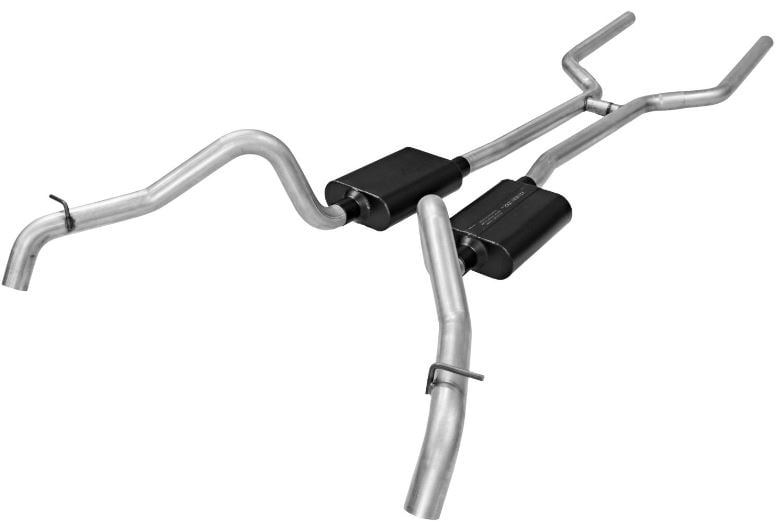
The exhaust system is a very important part of any vehicle. It routes exhaust gas and harmful fumes from the engine to the rear of the vehicle, away from passengers. This prevents carbon monoxide poisoning as well as decreased sound from entering the inside of your car, truck, or race vehicle. There are many different types of exhaust systems, materials, as well as muffler types to choose from that provide different sound, looks, and routing. To help you out with your research for the best exhaust kit for your vehicle, we have provided answers to the most common questions about exhaust systems below.
How Does An Exhaust System Work?
An exhaust system connects to the engine at the cylinder heads with manifolds or headers and routes exiting gases, sound, and fumes to the back of the vehicle, away from the passengers. Starting with the 1975 model year, a catalytic converter was required in the exhaust system of all passenger cars. Placed after the exhaust manifold(s), the catalytic converter helps transform the harmful gases (hydrocarbons, carbon monoxide, and nitrogen oxide) passing through its honeycomb of metals (platinum, rhodium, and palladium) into less harmful water, carbon dioxide, and nitrogen. After the catalytic converter, a pipe leads to the muffler. This section of pipe can be an X-pipe, H-pipe, or a standard pipe. X and H-pipes balance exhaust pulses on dual exhaust systems and improve either low or high-end torque and horsepower depending on the application. A muffler is located after the intermediate pipe to reduce engine noise level. Mufflers can be designed to be louder or quieter with performance gain or loss as a trade-off. Some vehicles use a resonator after the muffler to help tune out the frequency that creates resonance heard inside the vehicle at certain engine and vehicle speeds. Behind the muffler or resonator is a tail pipe that terminates under the rear bumper.
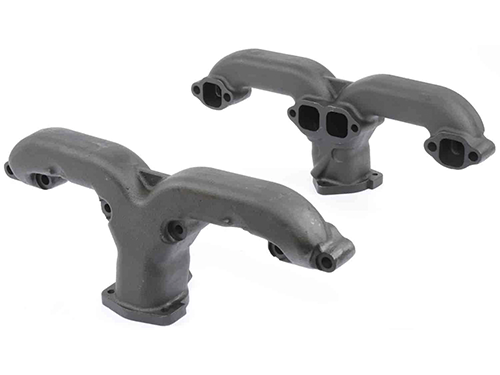
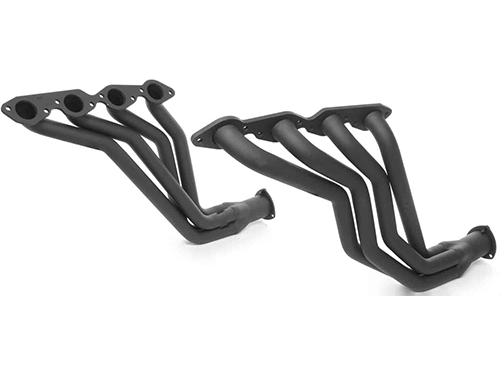
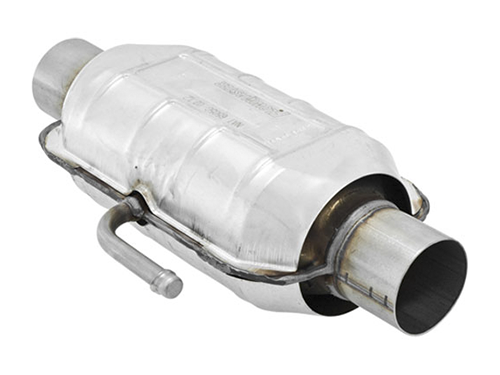
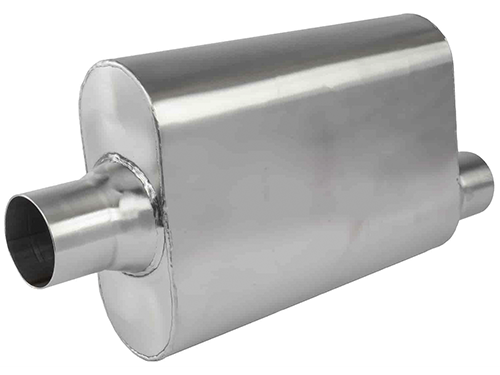

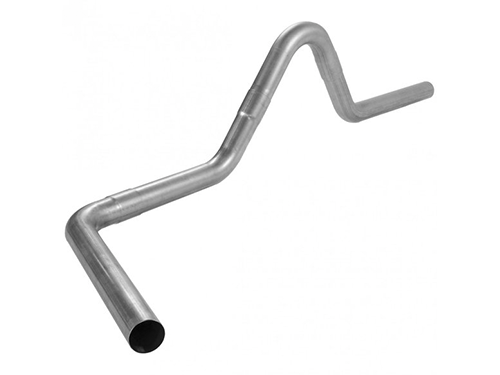
What Types Of Exhaust Systems Are Available For My Vehicle?
There are many different types and styles of exhaust systems, used both on factory vehicles and available from aftermarket manufacturers.
"Bigger is Better" is something we all hear as hot rodders all the time, but is certainly not the case when selecting the correct exhaust pipe diameter. The only part that holds true to this mantra is that bigger is louder. Low-end performance requires backpressure in an exhaust system. This backpressure is created by the restrictions in the exhaust pipe itself and helps pull spent exhaust gasses instead of having the engine push them out. This trait is called scavenging. When choosing a pipe diameter that is too big or an exhaust system that is too free-flowing, often a noticeable amount of low-end performance will be lost since the exhaust system is no longer providing a scavenging effect. This is because the engine has to use power that would normally go to the wheels to push these gasses out of the engine. Generally, gasoline V8 engines making less than 500 horsepower will perform best with a single 3" system or a dual 2.5" system. Gasoline engines producing over 500 horsepower will perform best with a single 3.5" or 4" pipe or a dual 3" exhaust system.
Diesel performance differs greatly when selecting the correct exhaust pipe size. The exhaust pipe size can be used to raise and/ or control the exhaust gas temperatures (EGT) of the engine which can lead to greater performance. Diesel exhaust systems will commonly be much larger, often up to 6 inches in diameter for higher horsepower applications, but there is a ceiling in this arena as well. Generally speaking, with a larger exhaust pipe more fuel that can be added to make more power. This mixture of fuel and exhaust flow helps maintain the EGTs but if the proper amount of fuel is not added with the increase in pipe size, severe engine damage may result.
Whether it be a gasoline or diesel application, it is never advantageous to run a straight pipe exhaust system without some sort of muffler. The only exception would be high RPM race application.
To help your research further, below are the most common types of exhaust systems on cars and trucks.
Single And Dual Exhaust Systems
A single exhaust uses one main pipe between the engine and the tailpipe. For V8 engines, a Y-pipe is used to merge exhaust from both sides into one pipe. From there, exhaust goes through a catalytic converter, muffler, resonator (for some applications), and ends at the tailpipe. Dual exhaust systems are available in one of two configurations. The first is similar to a single exhaust, but with the pipe splitting out after the catalytic converter or muffler into two pipes, creating a dual exhaust appearance. The other type of dual exhaust, often referred to as a "true dual exhaust", keeps the exhaust for each side of the engine separated and independent from the headers all the way to the tail pipes.
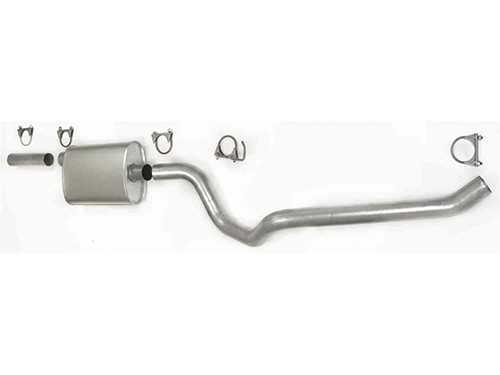
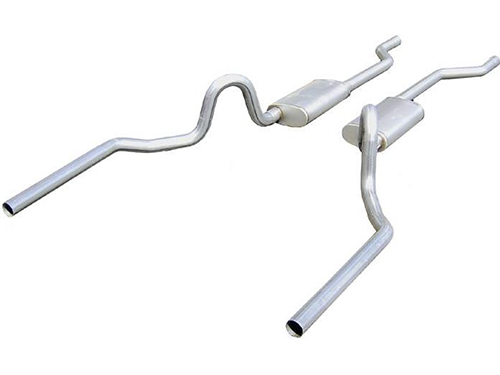
Manifold-Back / Header-Back And Crossmember-Back Exhaust Systems
Manifold-back, header-back, and crossmember-back exhaust kits are very similar in what is included. Manifold-back systems have longer downpipes than header-back kits as the exhaust manifolds are shorter, requiring more pipe. Header-back and crossmember-back kits are essentially the same. They include everything to connect to the header collectors and complete the exhaust system.
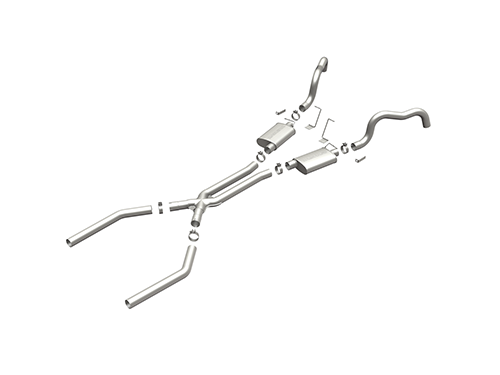
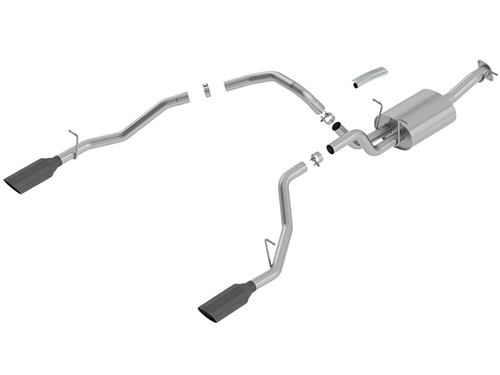
Cat-Back Exhaust Systems
There are different types of exhaust systems available from the aftermarket manufacturers. One of the most popular kits, the catalytic converter-back ("cat-back") exhaust system, connects to the back of the vehicle's catalytic converter and includes everything needed to replace all components behind it such as the muffler, tailpipe, hangers, hardware, and gaskets.
Muffler-Back Exhaust Systems
A smaller and more affordable system, the muffler-back exhaust kit includes the muffler and tailpipe, as well as necessary hardware to complete installation (clamps, hangers, hardware) depending on the application.
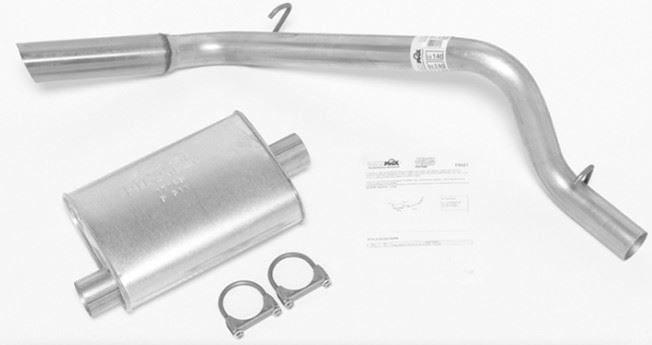
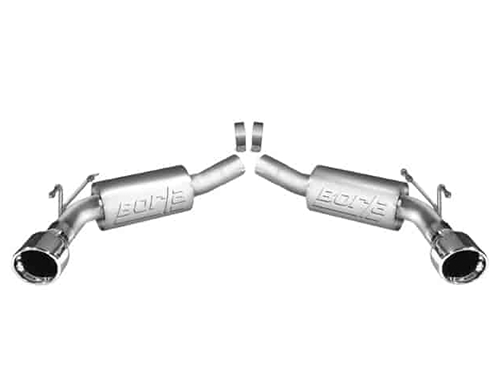
Axle-Back Exhaust Systems
Many late-model vehicles have exhaust systems which are designed with a muffler(s) after the rear axle. Axle-back exhaust systems include the over-axle pipe, muffler(s), and tail pipe(s). These kits are easy to install in most cases and a quick way to change the sound of your vehicle's exhaust.
Complete Exhaust Kits
Complete exhaust kits include the exhaust manifolds or headers as well as everything else to completely add or replace an exhaust system from the engine back, including gaskets, hardware, hangers, clamps, mufflers, pipes, reducers, and other components depending on the application.
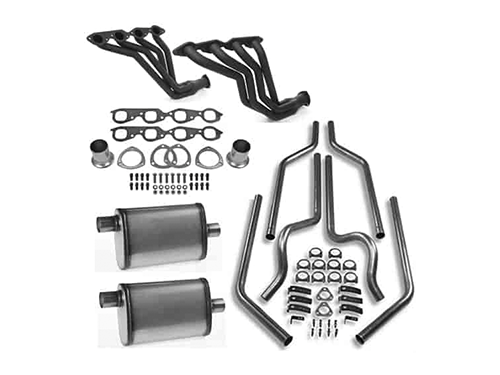
How Much Does An Exhaust System Cost?
Exhaust kits can run anywhere from under $150 for a stock replacement single exit system to over $3000 for a stainless steel dual exhaust setup depending on the year, make, and model of the vehicle.
How To Choose An Exhaust System
There are many different exhaust systems available from aftermarket manufacturers. When choosing an exhaust system, the first decision to make is which components you want to replace. Most of the time, a cat-back system is the ideal option, replacing everything that bolts to the back of the catalytic converter and includes everything to the rear of the vehicle. The exhaust parts in these kits are the most prone to rust and corrosion, in direct contact with the elements under the vehicle while driving. The next decision is which type of material the components in the system are made from. Most exhaust kits are made of aluminized steel, which helps delay rust and is more affordable than stainless steel, which is at the higher end of the price range. However, stainless steel exhaust kits use high-quality components and last a long time, often the life of the vehicle. They are often available polished or can be polished for show cars as well. The last decision when choosing an exhaust system is the type of sound you want for your vehicle. Whether you want a quiet exhaust system or that racecar “roar”, the mufflers included in the kit will have the most control over the sound level and personality of your vehicle. JEGS offers a large selection of exhaust systems to choose from that will meet your needs.
Exhaust Pipe Diameter
"Bigger is Better" is something we all hear as hot rodders all the time, but is certainly not the case when selecting the correct exhaust pipe diameter. The only part that holds true to this mantra is that bigger is louder. Low end performance requires backpressure in an exhaust system. This backpressure is created by the restrictions in the exhaust pipe itself and helps pull spent exhaust gasses instead of having the engine push them out. This trait is called scavenging. When you choose a pipe diameter that is too big or an exhaust system that is too free flowing, often you will lose a noticeable amount of low end performance since the exhaust system is no longer providing a scavenging effect. This is because the engine has to use power that would normally go to the wheels to push these gasses out of the engine. Generally, gasoline V8 engines making less than 500 horsepower will perform best with a single 3" system or a dual 2.5" system. Gasoline engines producing over 500 horsepower will perform best with a single 3.5" or 4" pipe or a dual 3" exhaust system.
Diesel performance differs greatly when selecting the correct exhaust pipe size. The exhaust pipe size can be used to raise and/ or control the exhaust gas temperatures (EGT) of the engine which can lead to much more performance. Diesel exhaust systems will commonly be much larger, often up to 6" diameter for higher horsepower applications, but there is a ceiling in this arena as well. Generally speaking, with a larger exhaust pipe more fuel that can be added to make more power. This mixture of fuel and exhaust flow helps maintain the EGTs but if the proper amount of fuel is not added with the increase in pipe size, severe engine damage may result.
Whether it be a gasoline or diesel application, it is never advantageous to run a straight pipe exhaust system without some sort of muffler. The only exception would be high RPM race application.
H and X Pipes
H Pipes became known in the mid 80's most commonly on the Ford (fox chassis) Mustang. The problem with a dual exhaust system on a dual bank engine such as a V6 or V8 is that there was no way to balance the exhaust cylinder pulses that enter the H-pipe. This H-pipe is a short section of pipe installed perpendicularly into a dual exhaust system that connects the two pipes and helps balance the exhaust pulses from bank to bank. The scavenging effect mentioned earlier is also enhanced by an H pipe as the exhaust system now has twice as many cylinder pulses to work with. X-pipes are a later off-shoot of the H-pipe concept and are often found to provide even better scavenging than a conventional H-Pipe. They are a great addition to any exhaust system. H and X Pipes can be purchased by application, universally or built into many cat-back systems. Contrary to what you might think, both styles balance pipes will make the overall exhaust system quieter than without.
Mufflers
Mufflers are wide open! There are hundreds to choose from. Mufflers vary in loudness and tone so you can buy the mufflers you like. You can get steel, aluminized metal, stainless steel and polished stainless steel mufflers. Stainless usually costs more, but will outlast most other types of mufflers. Common muffler inlet and outlet diameters for V8 gas and small truck diesel engines are 2.25", 2.5", 3", 3.5" and 4". Most mufflers are specified by the inlet size and the outlet size. Mufflers may have one inlet pipe and 1 or 2 exit pipes to run dual tailpipes. Inlet and outlet position can vary. A muffler that is labeled "Center In" or "Center Out" means the inlet or outlet pipe on the muffler is centered on the muffler body. A muffler labeled "Offset In" or "Offset Out" means the inlet or outlet pipe is offset on the muffler body. Some are cylindrical while others are more rectangular shaped. The physical dimensions of a muffler typically effect the sound and performance.
Catalytic Converters
OEM catalytic converters aren't usually meant to flow exhaust as we would like them to. Step up to a high flow set of catalytic converters to relieve the back pressure on your system. If you want your exhaust to flow better, you can't have an exhaust system with any limitations in it. Many high flow cats are available in stainless steel for long lasting performance.
How To Clean An Exhaust System
External cleaning of an exhaust system can be performed (when it is cool to the touch) with a mild detergent soapy-water solution. Additional cleaning can be done with a bristle brush. Internal cleaning of exhaust pipe components can only be performed with the exhaust system removed and dismantled and with specialty pipe cleaning tools. Catalytic converters, resonators, and mufflers cannot be internally cleaned and should be replaced instead due to limited access and the materials they are made of.
Can't Find The Exhaust System You Are Looking For?
A JEGS expert is ready to answer your questions and help you find the exhaust system that you require for your specific application.
